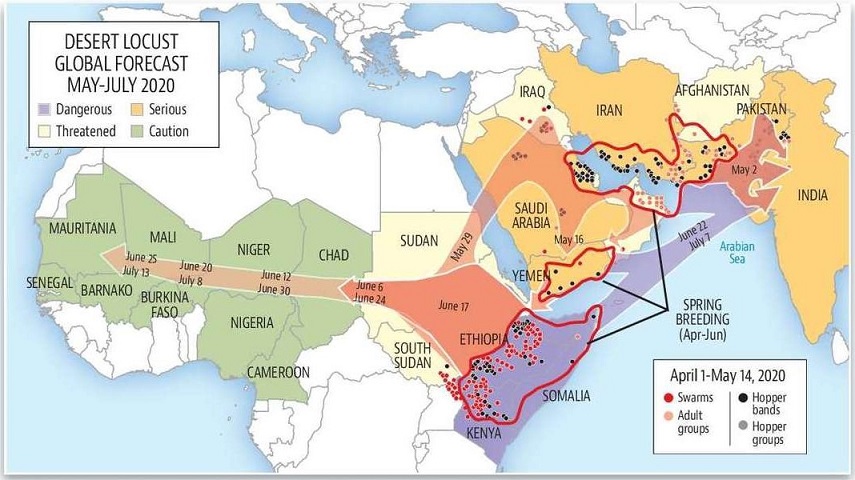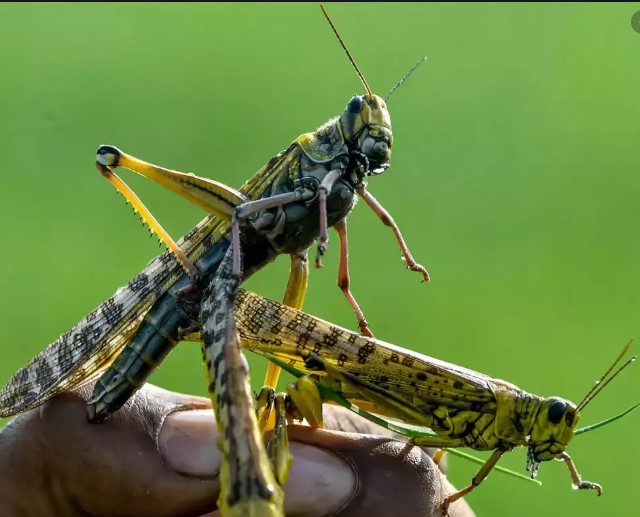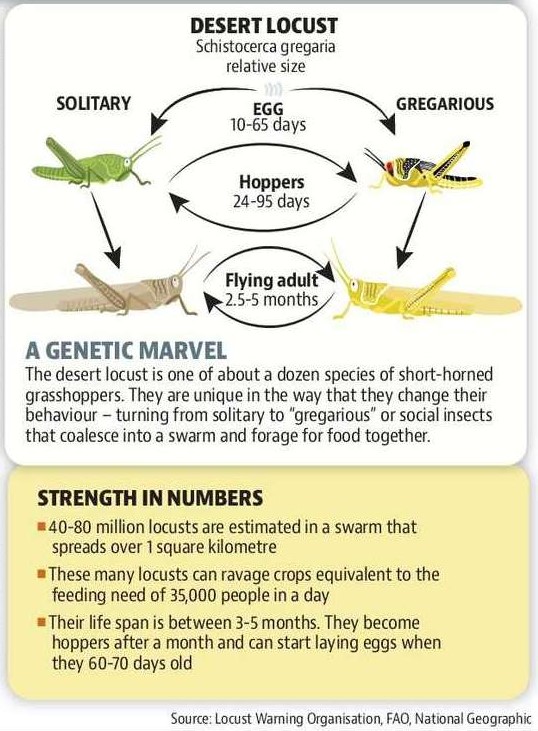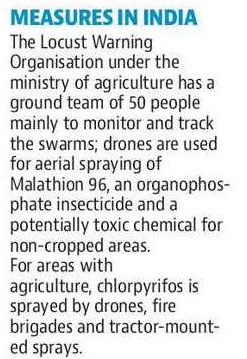Why in news?
- Swarms of crop-munching desert locusts entered deeper into Rajasthan, Madhya Pradesh and Uttar Pradesh over the weekend and are now close to the national capital.
- Officials have put farmers on high alert and deployed insecticide spraying devices through drones, SUVs and tractors, on 25th May.
Why is it serious this time?

- Locust invasions are common in parts of Rajasthan abutting Pakistan.
- However, this is the first time they have reached Jaipur – after charting a journey that experts believe began in their natural breeding ground in East Africa.
- The Jaipur swarm was only one of three swarms that was spreading. The second lot seems to be heading for Morena in Madhya Pradesh. The third in Jaipur region seem to be heading towards Gangapur city in Rajasthan.
- Most of the swarm seen at present consists of pink-hued sub-adult locusts. Officials fear these may arc back to their summer breeding area in the desert between India and Pakistan, where monsoon rains can help trigger a new round of breeding.
- If the wind and the conditions are suitable the locusts will move towards Delhi making the situation worse, according to Locust Warning Organization (LWO).
- The LWO is coordinating with the India Meteorological Department to determine the trajectory the insects might take.
- The locust outbreak this time is linked to climate change and unusual rain.
- The current breed of locusts unsettles on hearing sound of tractors, making the spraying of pesticides more difficult.
Desert Locusts

- The desert locust (Schistocerca gregaria) is a short-horned grasshopper that is innocuous while it is in a “solitary phase” and moving about independently.
- The life of a locust varies between three and five months. These insects do not pose a direct risk to animals or humans.
- These winged insects differ from normal hoppers, and become dangerous only when their populations build up rapidly and the close physical contact in crowded conditions triggers behavioural changes.
Why are they a serious problem, how do they spread?

- Locusts are polyphagous, i.e. they can feed on a wide variety of crops.
- Secondly, they have an ability to multiply rapidly. A single female desert locust lays 60-80 eggs thrice during its roughly 90-day life cycle.
- The damage potential of locusts has been limited in India only because of the country hosting a single breeding season — unlike Pakistan, Iran and East Africa, where they also multiply during January-June.
- When they are in close contact with each other in crowded situation, they enter the “gregarious phase”, by grouping into bands and forming swarms that can travel great distances (up to 150 km daily), while eating up every bit of vegetation on the way.
- If not controlled at the right time, these insect swarms can threaten the food security of countries.
- Locusts can fly up to 150 kilometres in a day and a one-square-kilometre swarm can eat as much food as 35,000 people, in terms of weight, in a single day.

-Source: Hindustan Times




